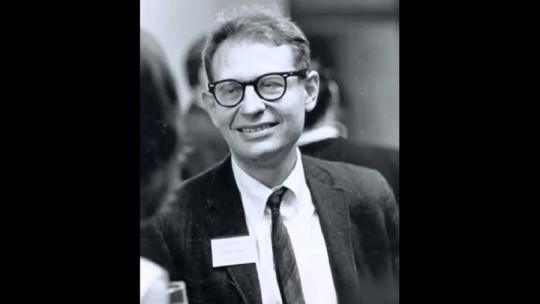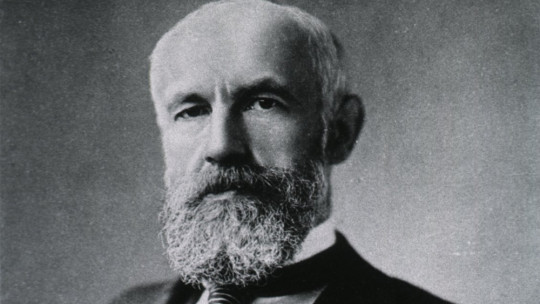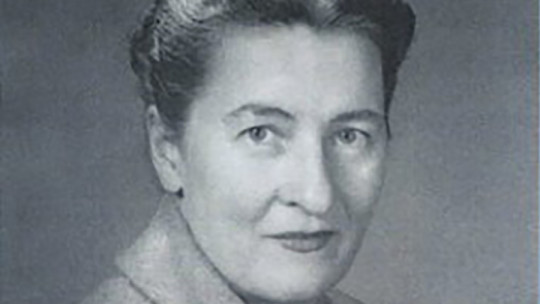Morality is a concept widely studied in Psychology. One of the most famous theories of moral development is that of Lawrence Kohlberg, an American psychologist born in 1927 and who died more than 30 years ago. However, his theory is still valid.
In this article we will see a biography of Lawrence Kohlberg and we will also briefly learn about his work and what the 6 stages that he proposed to explain the evolution of morality consist of.
Brief biography of Lawrence Kohlberg
Lawrence Kohlberg was an American psychologist born in New York on October 25, 1927, and who died on January 19, 1987 in Massachusetts at the age of 59. He studied at the University of Chicago; The field of morality and moral judgments was especially explored
Lawrence Kohlberg was influenced by the work of Jean Piaget, a Swiss psychologist who at that time had little influence in the United States, and who had researched cognition and morality primarily in children.
Trajectory
In 1958, Lawrence Kohlberg presented his doctoral thesis in relation to this topic, and received a doctorate in Philosophy; Specifically, he covered the topic of the development and evolution of moral judgments in the different stages of life.
In addition to being a psychologist and philosopher, Kohlberg He served as a professor at various universities Specifically, after graduating from the University of Chicago, he worked at Yale University for a short time. Later he returned to the University of Chicago, where he created the “Child Psychology Training Program.”
Research and work
Later, in 1968, Kohlberg moved to Harvard University, where founded the “Center for Moral Development and Education” It is at Harvard University where he carries out a deeper analysis of his ideas about the development of morality and autonomy.
In addition to his research, Lawrence Kohlberg went into practice, trying to implement his theory; Thus, in the Bronx neighborhood of New York, He worked on a program to apply his moral principles to maladjusted youth
Regarding his work, in addition to his research, he wrote various books on morality. Some of them are: The claim of moral adequacy of a higher phase of Moral Judgment (1973) or Essays on moral development: The Philosophy of Moral Development (1981).
Kohlberg’s moral development: characteristics
Lawrence Kohlberg developed his theory about moral development at different stages of life. Before delving into his theory, we are going to differentiate the concepts of morality and ethics; Thus, while morality, broadly speaking, refers to acting “right or wrong” in everyday life, ethics consists of philosophical reflection on said behavior
On the other hand, morality also includes a series of norms, customs and beliefs that are considered appropriate to judge or “catalogue” the behavior of people within a community.
To develop his theory, Lawrence Kohlberg presented ethical dilemmas to the participants of his research, in order to evaluate their level of moral reasoning Moral dilemmas consist of short narratives or stories where a character finds himself in a complicated situation, which involves a value conflict; That is, the character has to choose, generally between two comparable alternatives.
According to Lawrence Kohlberg, the progression and advancement of morality does not occur if the person does not previously experience a cognitive conflict that breaks the security of their reasoning. Thus, through these conflicts, one develops one’s own morality, according to the 6 stages that he proposes.
The moral stages
In each of these stages, an interaction occurs between two components: the social perspective and the moral content. Furthermore, the author assumes that moral development comes from cognitive growth and the result of certain relevant social experiences
Other characteristics of Lawrence Kohlberg’s theory is that the accommodation process proposed by Piaget is needed to move from one stage to another. Piaget’s accommodation refers to the change of cognitive structures to integrate new experiences, when the incoming information is too different or complex.
On the other hand, each stage forms a structured whole The sequence of the stages is invariant, and their progression is universal.
Levels and stages of morality
We are going to see the 6 stages that the author proposes, through which all people go through during the development of our morality. These 6 stages are organized around 3 moral levels (preconventional, conventional and postconventional); that is, each level includes 2 stadiums. Let’s see the levels and their corresponding stages:
1. Preconventional level
The first level proposed by Lawrence Kohlberg includes the age of 4 to 10 years , where the child presents an egocentric point of view (according to Piaget’s theory). This level is subdivided into two stages: stage I, heteronomous morality, and stage II, hedonistic.
1.1. Stage I: heteronomous morality
In the first stage, which is where small children are, the orientation is towards punishment or obedience. That is to say, the child avoids breaking the rules for fear of punishment
1.2. Stage II: hedonistic
Also called instrumental relativism, in stage II proposed by Lawrence Kohlberg, rules are followed only when they are in one’s own interest (that is, when its breakup affects oneself), and when that interest is immediate (for example: “don’t steal because otherwise they can’t steal from you”).
2. Conventional level
The conventional level appears at ages 10-13, where the other’s point of view is taken into account. Includes stages III and III:
2.1. Stage III: interpersonal agreement
Here the orientation is towards being a “good boy”; that is to say, you live according to the expectations of those close to you For example: “You should not steal because children are expected not to steal.”
2.2. Stage IV: maintenance of the law
Also called the stage of social order, here the agreements that have been made are fulfilled, that is, we act thinking that “the laws are there to be fulfilled.”
3. Postconventional level
Lawrence Kohlberg’s third and final level is the most advanced, and appears from early adolescence, early adulthood, or may never even reach this level (depending on the person). It includes stages V and VI:
3.1. Stage V: orientation to the social contract
The orientation of the person is towards individual rights and towards democratically accepted law The rules are considered relative to the group because there is a variety of value systems, and they must be followed because they are a “social contract.”
3.2. Stage VI: universal ethical principles
The last stage, stage 6, which, according to Lawrence Kohlberg, only a few reach, would be like supreme morality; At this stage, self-selected ethical principles are followed. The agreements rest on such principles, which are usually equality, justice and peace
Death and legacy
Lawrence Kohlberg died on January 19, 1987 at the age of 59. However, his intellectual legacy persists Kohlberg’s theory of moral development remains a reference, and is still valid today. Thus, his knowledge continues to be transmitted, since his contributions were of notable importance and very useful for understanding how morality develops and based on what we consider something as moral or non-moral.









